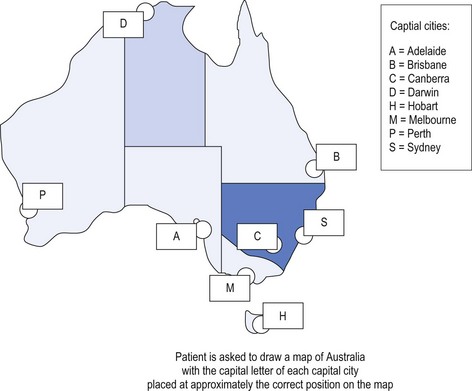2 The neurological examination
Higher centres
The neurological examination is broken down into three components:
Higher centre function testing
It is not enough to know which tests to perform as it is equally important to appreciate what is being tested and what the results mean. The above tool describes both the test and the modality tested. It also offers suggested limits of normality based on experience of the average patient (see Box 2.1 on p. 10). A patient achieving below average for a test has demonstrated a localised problem, such as memory problem with possible temporal lobe dysfunction. This helps direct further investigations.
Box 2.1 Testing cognition
Summary








